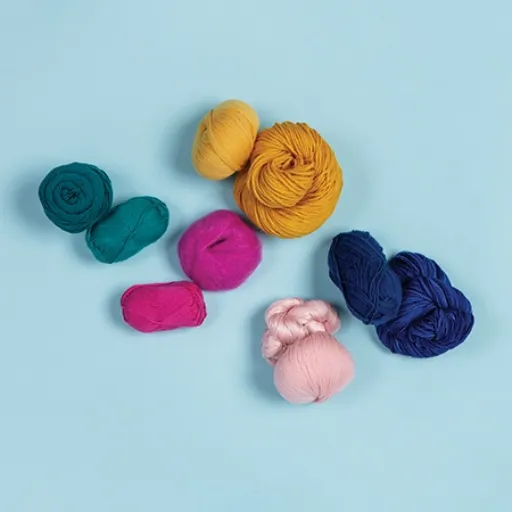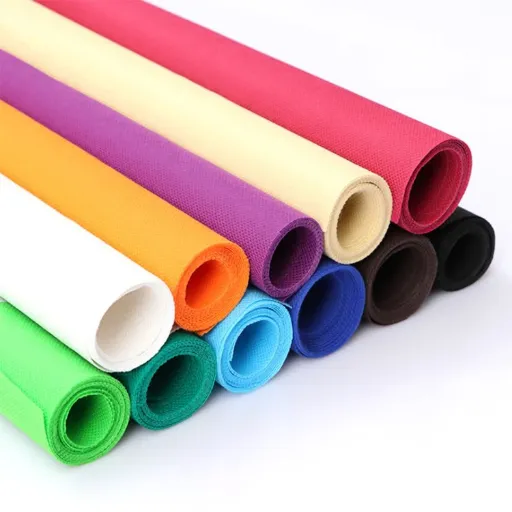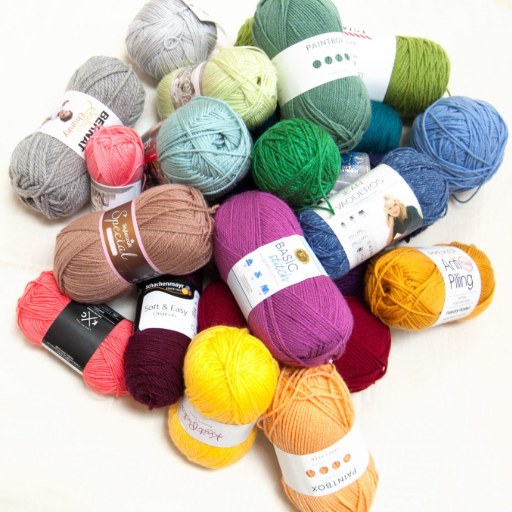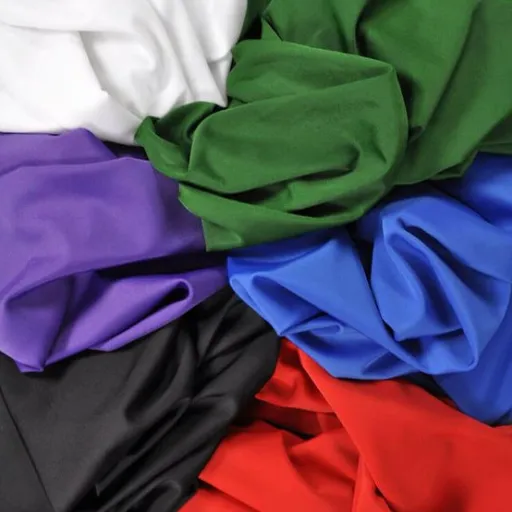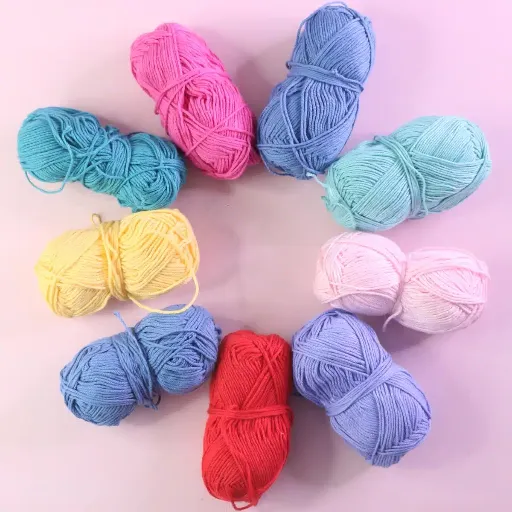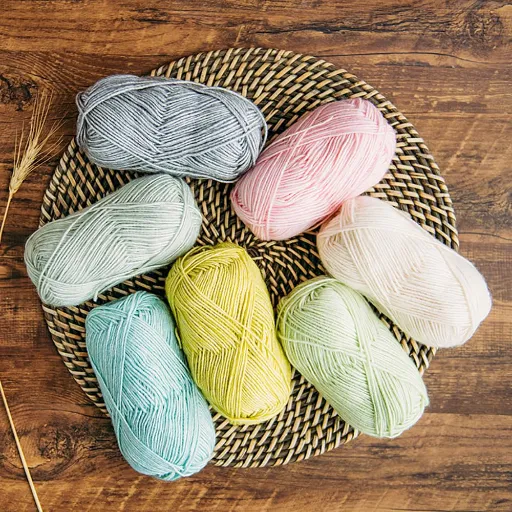Spandex yarn has become a game-changer in the textile industry, owing to its flexibility, durability, and comfort. Even though cotton and spandex have been blended together for breathability and Lycra has been coupled for greater elasticity, the use of spandex has emerged as a key factor in the manufacture of fabrics that are both versatile and high-performing. Spandex is found not only in athleisure but also in daily essentials and its impact on fashion and functionality is enormous. The article is going to discuss the versatility of spandex yarn by highlighting its use in cotton spandex and Lycra textiles. The blends will be analyzed in terms of their unique properties that make them popular, and the wide range of needs they address will be discussed—from comfort and style to durability and innovation. Be ready to enter the spandex world and find out why it is a game-changer not only for the manufacturers but the consumers as well.
Understanding Spandex Yarn
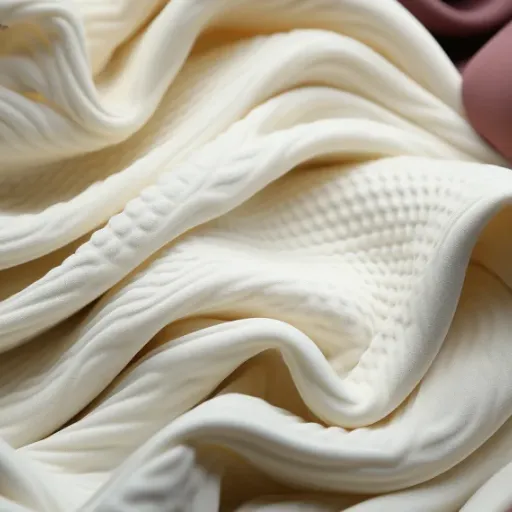
What is Spandex Yarn?
Spandex yarn is a type of synthetic fiber made from polyurethane that is recognizable for its extreme elasticity and strength. At the very beginning, this yarn comes from a polymer called polyurethane, which is a highly elastic material that can stretch to a great extent and bounce back to its original form without losing any of its properties. This very characteristic of spandex makes it the most favored choice for materials that require not only accurate fitting but also a high degree of stretching.
Besides, spandex is commonly mixed together with other fibers like cotton, polyester, or nylon, etc., to not only get its elasticity but also the others’ softness, durability or specific features, etc. These mixes are very well accepted in the fashion and sports industries since they produce clothes that are both functional and attractive. Also, spandex yarn will prevent all kinds of shape changes, wrinkles, and fabric wear-outs caused by repeated use and so forth.
One major attribute of spandex yarn is its multi-functional character. It is used for a variety of purposes, from common wear like leggings and socks to unique things like swimsuits and medical compression garments. The flexibility and dependability of spandex yarn enable it to be an indispensable factor in fulfilling the continuously changing requirements of today’s consumers.
Types of Spandex Fibers
Different varieties of spandex fibers exist for classification according to their composition and the application that has been designed for them. Here are some of the main categories of spandex fibers along with their properties and usage:
Regular Spandex
Regular spandex or standard spandex is the most commonly used spandex fiber. By giving outstanding elasticity and recovery, spandex makes it possible to use it in the manufacturing of stretchable garments like leggings, yoga pants, and activewear. The maximum stretching of this type is about five times its original length, and it can also return to its original shape, thus providing durability and comfort of the same high standard.
Solution Dyed Spandex
In the solution-dyed spandex process, the color of the fiber is added during the manufacturing process, which results in bright and vibrant yet long-lasting colors. This type is mainly used in the production of color-retaining items like swimsuits and underwear. The fabric dyed with solution dyed spandex technology results in significantly less water used and less dye waste created as opposed to conventional fabric dyeing methods, thereby paving the way for a more sustainable approach.
Heat-Resistant Spandex
Heat-resistant spandex is specially designed to endure very high temperatures. Its unique chemical composition facilitates the creation of heat-proof garments, such as firefighters’ protective clothing, and also finds its way into technical textiles used in the automotive industry’s interior parts. It has also recently been developed to become even more heat-resistant while still remaining elastic through prolonged heat exposure.
Eco-Friendly Spandex
Eco-friendly spandex is an indicator of the increasing demand for sustainable and nature-friendly materials. This type is produced from either recycled materials or bio-based sources that minimize the dependence on fossil fuels.
Lightweight Spandex
Lightweight spandex is characterized by being very thin yet extremely elastic at the same time. Close-fitting garments like hosiery, lingerie, and compression wear are its main applications. Lightweight spandex helps in the comfort of the wearer by giving a second-skin feeling and increasing breathability.
Manufacturers are enhancing the excellent qualities of spandex types through technology and diversifying their offerings to meet the ever-changing demands of customers worldwide.
The Benefits of Using Spandex in Textiles
Spandex is the most elastic of all fibers, bringing a lot of flexibility and comfort to the wearer. The stretchability aspect makes garments such as sports, active, and underwear to completely go along with the body giving the best support and allowing the most movement. Also, the spandex won’t lose its shape even after being stretched so many times that the clothing will still be durable and figure-hugging for a long time.
A lightness is another reason for spandex’s being a major advantage, which the wearer enjoys as a small part of the comfort provided by the overall weight of the garments reduced. Together with its moisture-wicking and ventilation properties, it has been regarded as the most suitable fabric in the activewear and performance clothing categories. Spandex promotes cooling and drying as it allows for sweat evaporation and thus it is indispensable in high-intensity workouts.
Spandex’s power of combining with other fabrics, like cotton, polyester, or nylon, is also a reason for its high demand. The coating would not only be more comfortable but also more durable and stretchy. The addition of spandex in the textile recreates the fitting and functionality of the outfit from the most casual to the most professional apparel that meets varied user needs.
Applications of Spandex Yarn in Garments

Spandex in Swimwear and Activewear
Spandex has become the core material in making swimwear and activewear. This can be credited to its unrivalled elasticity, strength, and comfort. In swimwear, spandex is the main contributor to the form-fitting and body-shaping fit, which guarantees that the wearers can swim and feel confident. The modern swimsuits are usually the combination of spandex and other materials such as nylon or polyester, which make the swimsuits resilient to chlorine, UV rays, and moisture; thus, the durability of the swimsuits is considerably extended.
In the same way, the activewear industry is also dependent on spandex, which is the main source of flexibility and support required for strenuous physical activities. The most common activewear items are leggings and compression wear, sports bras and performance T-shirts, and in all of them spandex is the mainstay. The wide range of movement ensured by its stretchable nature comes without losing shape or support thus it is suitable for all types of activities from yoga to high-performance sports. The presence of spandex is essential for the meeting of the customer demand for comfy, sturdy, and performance-enhancing garments prevailing in the ever-growing market of activewear.
Cotton Spandex for Everyday Apparel
Among the fabrics used for everyday wear, cotton spandex has become the most popular one because of its excellent combination of comfort and flexibility. The adding of spandex to cotton gives the garments a little stretch, making them keep their form and fit just right all day long. This property of cotton spandex fabric makes it not only suitable for casual wear such as T-shirts, leggings, and loungewear but also providing the softness of cotton while improving mobility and wearability.
The main benefit of cotton spandex is its adaptability in design. It fits different body shapes and movements, hence, it is a sensible choice for the daily use garments. Moreover, the breathable quality of cotton guarantees that the clothing will remain comfortable even through long wear or in hot climates. Besides, spandex helps the fabric to be more durable which means that products made from this blend will last longer and be less prone to damage from frequent use.
In short, cotton spandex is the fabric that combines comfort, style, and functionality in perfect proportion. It caters the increasing requirement for clothes that are simultaneously practical for everyday use and good-looking. Its quality of fitting into various lifestyles and occasions makes it part of the fashion world forever, satisfying the demand of the contemporary customer who is looking for high quality, everyday wear.
Creative Uses in Knitting and Crochet Projects
Cotton spandex has turned into a well-known option for knitting and crocheting fans because of its versatility, elasticity, and longevity. Its extraordinary characteristics make it especially perfect for the production of items that must not only retain their original form but also provide comfort in wearing. What follows are some creative uses and important points that plainly demonstrate why cotton spandex is being used in these projects:
Wearable Clothing Items
Cotton spandex can be the perfect fabric for knitting or crocheting tank tops, leggings, cardigans, and fitted dresses. The elasticity of spandex provides a perfect and comfortable fit, while the ventilation of cotton makes the pieces suitable for wearing throughout the day. The latest industry reports indicate a growing preference for lightweight yarns mixed with spandex for activewear, which has become a market segment with an annual increase of 6.5% owing to consumers demanding more functional and flexible clothing.
Custom Accessories
The fabric mixture is indeed a perfect match for the production of accessories like headbands, hats, gloves, and scarves that have to fit perfectly. Thanks to the spandex elasticity, the items can easily fit different shapes and sizes without losing their original firmness, thus making them long-lasting. Observations from knitting communities like Ravelry point to a growing interest in projects using cotton spandex yarn, especially for designing custom-made and useful headgear.
Home Décor Projects
Cotton spandex is very suitable for making stretchy cushion covers, chair pads, and other home décor items such as reusable basket liners. These projects require both flexibility and aesthetic appeal, which makes cotton spandex a good choice in modern interiors. Current DIY trends show a 40% rise in the use of cotton spandex for home crafts as it is easy to maintain and adaptable, thus being able to meet the demands of contemporary living.
Baby Clothing and Toys
Because of its softness and stretchability, cotton spandex is the material of choice for making baby onesies, socks, and even crocheted toys. Parents like the hypoallergenic and breathable properties of cotton coupled with the stretchiness that spandex gives for soft comfort. The latest figures show that there is a rising trend in consumer preference for eco-friendly and non-toxic fibers for baby goods, and cotton spandex is a helpful supplier here, as it meets the criteria perfectly.
Stretchable Fitness Accessories
Knitters and crocheters with innovative ideas are utilizing cotton spandex to develop fitness-centered items such as yoga mat straps, resistance bands, and stretchable pouches. The market acceptance of these handmade, sturdy products that unite usability with beauty is very high among customers.
Crafters using cotton spandex yarn will be able to produce professional-quality results in their works while enjoying a fabric that is easy to wash and has a long lifespan. With the progress in demand for eco-friendly and practical fabrics in the DIY segment, it is no shocking that cotton spandex keeps on being a star in the world of knitting and crochet projects. To go deeper into the various techniques and ideas, there are many online tutorials and forums that provide step-by-step help specifically designed for this versatile material.
Knitting with Spandex Yarn
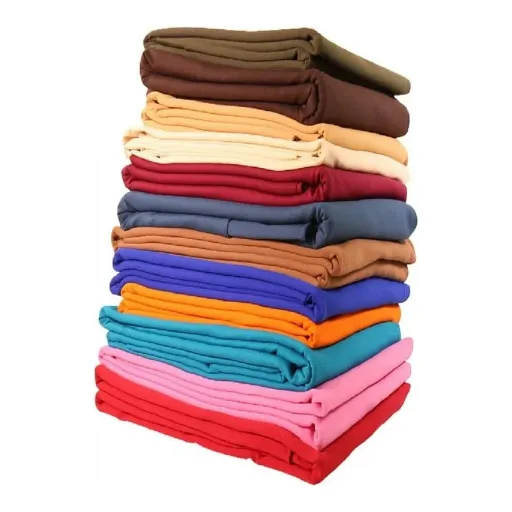
How to Choose the Right Spandex Yarn for Your Project
First and foremost, when you are to select the suitable spandex yarn for your project, think about the design’s stretch and elasticity requirements. The application of spandex yarns usually includes blending with cotton, polyester, or nylon or other materials, so think of the mix that the project expecially the intended usage will need. For instance, a cotton-spandex mixture would be perfect for manufacturing soft, breathable clothes, while synthetic blends may give more strength.
Then, consider the yarn’s weight and thickness. Yarn weight selection will affect the final product’s texture and drape. Fine yarns are most suitable for light-weight designs like socks or tops, while thick yarns are the better choice for heavier pieces or adding accessories like bags and hats. Measure the yarn weight according to the recommended gauge of your pattern, as this will give you accurate and consistent results.
Finally, examine the handling and care of the yarn. Spandex yarns should not be the ones that fray or lose their elasticity with time. If ease of care is a priority, go for the yarn that is machine washable and check the reviews or product descriptions to assess user experiences. By considering these factors, you will be able to choose a spandex yarn that satisfies both your functional requirements and artistic idea.
Stretchy Fiber Knitting Techniques
Knitting with stretchy threads like spandex requires modifying your tension in a way that the material’s elastic property gets fully utilized. Initially, make a swatch and then practice on it to get a soft tension that allows the fiber to stretch without causing the knitted cloth to gather or deform. If you work with a slightly looser tension than usual, it can help in retaining the material’s elasticity and at the same time, you will have a smooth, uniform fabric.
Choosing suitable needles also makes a huge difference. Go for needles that have a smooth surface to avoid the snags that will occur as the stretchy fibers smoothly move through. Circular needles are of great help when it comes to large projects as they are able to distribute the weight of the fabric evenly. Moreover, if you use a slightly larger size of needle, it can help in keeping the stretch of the yarn, making your work more movable and comfortable to wear.
Last but not least, think about the use of such techniques as ribbing or garter stitch patterns that naturally expand and contract with the fabric, and thus support the fiber’s stretch. When finishing your project, use stretchy bind-off methods so that the edges of the garment that you made are still elastic. Blocking might not be necessary or effective for synthetic stretchy fibers; however, gentle shaping of the fabric may improve its final fit and look. The application of these methods will lead to obtaining consistent and durable results with stretchy yarns.
Popular Patterns for Spandex Knit Fabric
Spandex knit fabric is highly recommended as a material choice for making clothing that needs to be flexible and closely fitted. Spandex knit fabric’s ability to stretch and recover makes it a perfect candidate for various projects. The frequently used patterns for spandex knit fabric mainly cover the areas of activewear, swimwear, and casual wear.
Activewear patterns like leggings, sports bras, and tank tops are among the best choices for spandex knit fabric as this fabric offers support and comfort during exercise. These patterns generally have minimal seams and are made using techniques that ensure smooth and unobstructed movement and thus enhance functionality.
Swimwear is yet another common application for spandex knit fabric because of its resistance to water and fast-drying ability. Bikinis, one-piece swimsuits, and swim shorts are among the top patterns in this category. Furthermore, casual wear such as fitted dresses, t-shirts, and loungewear also benefits from the stretch of spandex fabric where the garment is at once trendy and practical for everyday use. These patterns are all about comfort and freedom of movement which makes them suitable for different activities.
Caring for Spandex Fabrics
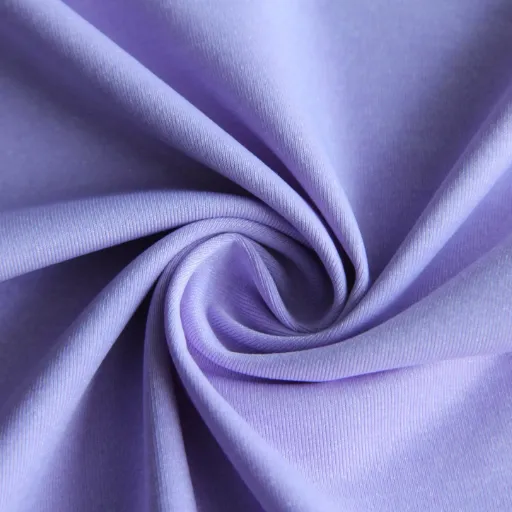
Washing and Drying Guidelines
Spandex materials need proper care to keep their stretching ability and life span. Here are some thorough tips to follow:
Washing
- Temperature: Cold or lukewarm water (under 30°C/86°F) should be used to keep the elastic fibers from being damaged. The water temperature can cause shrinkage and material weakening if it is hot.
- Detergent: Go for a mild, non-chlorine detergent that will do the least chemical wear on the fibers. Stay away from fabric softeners since they leave spandex with a coating that makes it less elastic.
- Method: Hand washing is the best way to clean spandex clothes but, if you decide to use a washing machine, then choose the gentle or delicate cycle. Always put garments in a mesh laundry bag to safeguard them against friction.
- Frequency: It is important to wash clothing made of spandex after every wear, but especially for sportswear, because of the sweat and oils that eventually lead to fiber degradation over time.
Drying
- Avoid Heat: Never use the dryer for spandex fabrics, as high heat will lead to either melting or loss of elasticity.
- Air Drying: Allow the garment to dry flat on a towel in a shaded area or hang it up for drying away from direct sunlight, which can weaken the fibers and cause discoloration.
- Avoid Wringing: Do not twist or wring spandex garments, as this may cause distortion of their shape.
Regular proper washing and drying as cited by fabric care specialists can increase the life span of spandex garments even up to 40%. Adhering to these practices goes a long way in making your clothes flexible, durable, and comfortable over extended periods.
Maintaining Elasticity in Spandex Yarn
The elasticity of spandex yarn is maintained only if proper care practices are followed. As a rule of thumb, the yarn should not be exposed to high heat, as this would weaken the fibers and result in a decrease of stretch. The sources of heat such as hot water, dryers, or direct sunlight should be cut down to a minimum. Washing spandex yarn in the cold or lukewarm water is perfect, and a mild detergent that lacks harsh chemicals or bleach is recommended.
Furthermore, the right storage of spandex yarn is very important if the elastic properties are to be preserved. The yarn should be kept in a cool and dry place, away from moisture and direct light. It is also necessary to not have heavy things placed on the yarn, as this might result in sagging or loss of shape over time. Proper storage will not only prolong the life of the yarn but also keep its elasticity intact.
Last but not least, care should be extended to spandex yarn during usage and application. Avoid overstretching the material beyond its natural limits, as excessive tension can cause wear and tear or permanent loss of elasticity. Also, regular checks for damage or weakened areas are recommended. The elasticity and performance of spandex yarn can thus be extended by following these simple steps.
Repairing Spandex Garments
The process of mending spandex clothing offers a good chance to prolong their period of use as well as to keep them wearable. The very first move in the repairing of such materials is to pinpoint the damaged part, i.e. a tiny tear, a hole, or a stretched area. After the location has been marked, the damage should be checked to see how deep it is and what action should be taken. Very small damages like microscopic holes or loose seams can be easily fixed, but bigger tears might need a professional to come in.
The first step for small holes or tears is needle and thread that is to say a straightforward repair can be done by taking a needle and thread. The thread used should have elastic properties to correspond with the flexibility of spandex material and the zigzag stitch should be used to keep the elasticity. The fabric should be stretched a little while sewing so that the material will not become weaker than it already is. If seams are coming apart, just make the seam stronger by carefully stitching over it once and thus restoring its strength.
For larger damages or if the damaged area makes the garment’s functionality less effective, think of using a spandex patch or fabric glue. Patches must be cut to size, a little larger than the damaged area, and use a glue that is appropriate for attaching fabrics that stretch to bond the patch properly. Always heed the manufacturer’s washing and drying instructions so as not to weaken the repaired area during those processes. By using these repair methods, spandex garments can not only get back their original performance but also their comfort.
Future Trends in Spandex and Textile Innovation
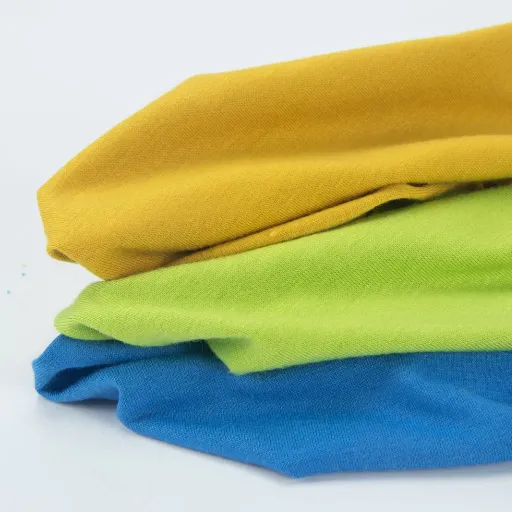
Eco-Friendly Spandex Options
The quest for sustainability in the textile industry has led to the introduction of eco-friendly spandex options. The first step in this direction is the recycling of waste materials for spandex production. Manufacturers are turning waste products like recycled polyester or discarded spandex fibers into new, high-quality fabrics that are less harmful to the environment. Thus, spandex production not only cuts down on waste but also lessens the need for new materials.
On the other hand, one of the most innovative moves is towards the use of spandex materials that can be biodegraded. These fibers when disposed of are designed to breakdown easily thus being a lesser problem for the landfills. With such an engineering feat, spandex has been made with properties that disintegrate in specific environments and the scientists are really hoping that these will be the long-lasting environmental issues caused by synthetic fabrics.
Lastly, the production of sustainable spandex also utilizes energy-saving methods and non-toxic materials. The environmental impact caused by the traditional method of spandex production is reduced by the application of the new techniques which consume less energy and do not involve the use of harmful substances. All these methods together try to meet the needs of the industry for stretchable, versatile and at the same time for a greener textile industry.
Technological Advances in Stretch Fabrics
The emergence of bio-based elastomers was one of the most remarkable technical progress in the domain of stretch fabrics. The sustainable fashion industry is now using these kinds of materials that are derived from the renewables like plant-derived oils or natural polymers. To tell the truth, if we talk about the environmental sustainability, bio-based elastomers definitely win over traditional petroleum-based elastic fibers since they would still be able to preserve the planet by not using fossil fuels and also by producing less waste. Here, we have an innovation that not only caters to the demand of high-performance fabrics but also is in line with the need for corporate environmental responsibility.
On the other hand, the next innovation worth mentioning is the mixing of smart textiles with stretchable properties. Smart textiles are nothing but fabrics that are embedded with sensors, conductive elements, or other responsive components that can monitor a person’s temperature, movement, or any other physiological factor. When these types of fabrics are made with stretchable materials, they turn out to be quite comfy, adaptable, and functional. Hence, they can be used widely in areas such as sportswear, healthcare, and wearable technology. Definitely, these developments indicate that modern stretch fabrics are no longer limited to traditional usages, but rather they are incorporated into state-of-the-art applications.
Moreover, one more factor contributing to the sustainability of stretch fabrics is the improvement of production processes. The use of water-free dyeing, recycling of production waste, and energy-efficient manufacturing are some of the ways the textile industry has been trying to minimize its ecological footprint. The adoption of these practices not only lessens the impact on the environment but also results in the production of high-quality, strong fabrics. The sum of all these developments is that they are together making stretch fabrics more compatible with consumer preferences and wider environmental goals.
The Role of Spandex in Sustainable Fashion
Spandex, the fabric with a remarkable elasticity, is very durable and versatile; thus, it is becoming commonly used in sustainable fashion. The main source of spandex has been synthetic materials which are very harmful to the environment but spandex’s long life and resistance to wear are environmental concerns’ mitigation, therefore, s becoming more sustainable. The spandex blended textiles can last for a longer time and the sustenance objectives are achieved by the reduction in replacements which is the very goal of sustainability.
The initiatives and efforts aimed at making the production of spandex more sustainable have gained speed. Energy consumption, water use reduction, and the search for bio-based alternatives are the main objectives of the innovative processes. Not only do these improvements bring about the reduction of environmental impacts due to spandex production, but they also bring the material closer to being compatible with the practices of sustainable fashion in the industry.
Designers are given the opportunity to make an array of clothing that is not only useful but also deep-rooted in sustainability through spandex. Its presence in multifunctional garments—like activewear that can also be used as casualwear—creates a situation whereby the demand for single-purpose items is eliminated and the users are facilitated to possess a smaller and more organized wardrobe. By the union of spandex’s characteristics with eco-friendly production and careful designing, the material has become a linchpin in the unfolding of a more environment-friendly fashion industry.
Frequently Asked Questions (FAQ)
Q: What is spandex yarn and what are its common uses?
A: Spandex yarn is elastic fiber yarn which is made from a synthetic fiber that is known for its exceptional elasticity and stretch. It is largely used in the making of elastic spandex fabric which is often mixed with other fibers like cotton or polyester in the production of garments that require flexibility and comfort. The major uses are in the production of activewear, underwear, and everyday clothes.
Q: How does spandex yarn differ from nylon spandex?
A: Spandex yarn and nylon spandex are both elastic but spandex yarn is a reference to the specific stretchable fiber itself used in many textiles while nylon spandex is a combination of nylon and spandex where the nylon fibers are blended with spandex to fortify the otherwise delicate nature of the spandex. Such combinations are mostly found in swimwear as well as loungewear garments that require high elasticity.
Q: Can I use spandex yarn for knitting and crochet?
A: Certainly, spandex yarn is permissible in both knitting and crochet projects. The unique elastic nature of the yarn adds texture and ability to keep the shape which makes it superb for tight fitting clothing and accessories. Also, many yarners combine the spandex with other types of yarn like acrylic yarn or cotton to arrive at varying effects.
Q: What are the benefits of using yarn with spandex?
A: Yarn blended with spandex possesses a number of positive qualities such as softness and elasticity which translate into better comfort and freedom of movement. It has good shape retention, thus the person clothed in such a garment will have the desired snug fit without the form being lost. Besides, this type of yarn is often resistant to wrinkling and fading, thus it is suitable for everyday clothing.
Q: Is there a difference between t-shirt yarn and spandex yarn?
A: Certainly, t-shirt yarn is usually made from fabric remnants, thus a thick and textured yarn is produced; this is often used for the creation of items such as bags and rugs. Spandex yarn on the other hand is focused on the stretch aspect and it is usually mixed with other materials in order to enhance the stretch of clothing items. So the differences in properties dictate the different crafting uses of both yarns.
Q: What is the role of elastane in blended fabrics?
A: In blended fabrics, elastane aka spandex takes an important role by contributing stretch and comfort. By being part of the fabric, it becomes easier for the fabric to regain its shape after stretching which in turn makes it a good choice for designing clothes that fit tightly such as leggings and also for athletic wear.
Q: How should I care for items made with spandex yarn?
A: To keep the quality of items made with spandex yarn, one should wash them in cold water and also dry them at low heat which is recommended. This preserves the elasticity and also prevents the formation of damage that is caused by exposure to heat. Hand washing is often recommended for delicate items to ensure that they last longer.
Q: Can spandex yarn be used in combination with other types of yarn?
A: Yes, definitely! Mixing spandex yarn with different fibers like polyester, acrylic, or even cotton can create different and unique blends. For example, blending spandex with premium t-shirt yarn will give you soft, stretchy fabrics, perfect for casual wear. The texture and functionality of finished projects can be improved by mixing different types of yarn.
References
- Textile Learner – Spandex Fiber: Properties, Manufacturing Process and Uses – Provides detailed insights into the properties, manufacturing processes, and uses of spandex fibers.
- Textile Yarn – A Deep Dive into Cascade Fixation Elastic Yarn – Explores the benefits and applications of spandex yarn in modern textile production.
- Raeis Industrial Group – Spandex Yarn Production Process – Discusses the production process and quality factors of spandex yarn.
- GD Dhoma – High-Quality Spandex Covered Yarn for Textile Applications – Highlights spandex-covered yarns for enhanced elasticity and durability in textile applications.








